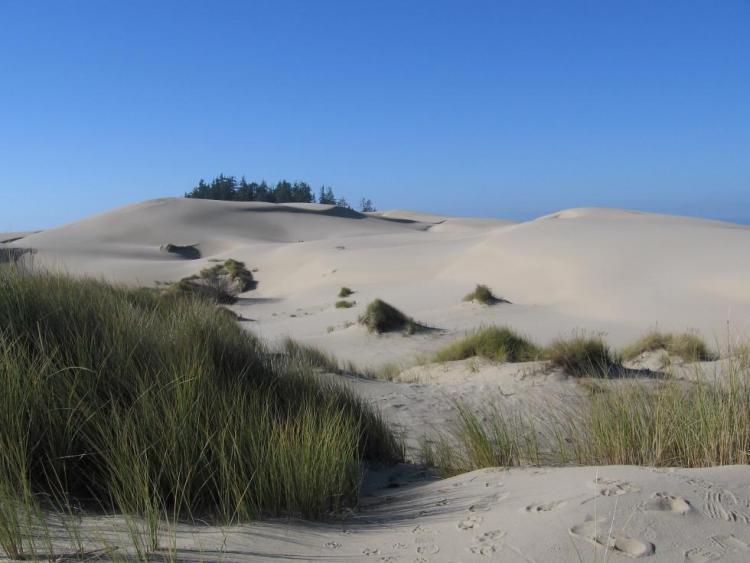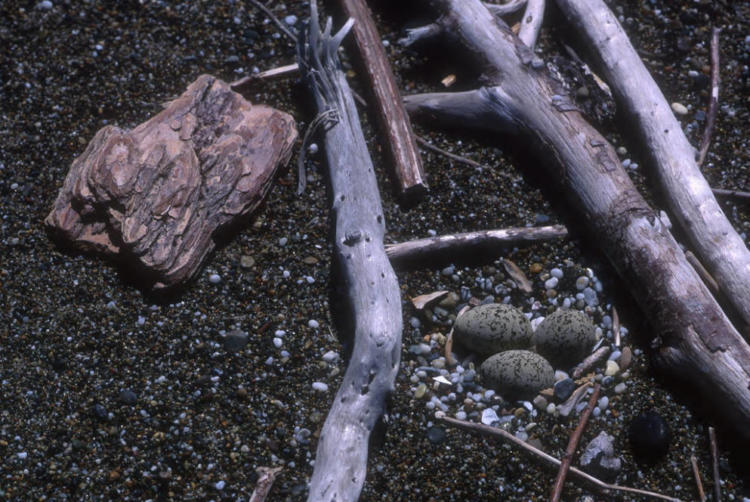
Occurring along the Oregon coastline, coastal dunes provide habitat for species that prefer open, sandy habitats with a high degree of disturbance from winds and tides.
Limiting Factors and Recommended Approaches
Limiting Factor: Beachgrass Invasion
European beachgrass stabilizes dunes, resulting in changes in vegetative communities and loss of open sandy habitats that are vital to native species.
Recommended Approach
Use mechanical and chemical treatment to control European beachgrass in priority areas, such as Western Snowy Plover nesting areas and near pink sandverbena populations. Build on existing restoration efforts to control beachgrass.
Limiting Factor: Invasive Plants
Stabilized dunes are vulnerable to invasive species, such as Pampas grass, Scotch broom, and gorse, which displace native plants and animals and accelerate succession.
Recommended Approach
Control key invasive plants using site-appropriate tools, such as mechanical (e.g., mowing, girdling, pulling), chemical, and biocontrol (for gorse) treatments.
Limiting Factor: Increasing Development
Stabilized dunes are being developed for residential housing.
Recommended Approach
Use voluntary cooperative approaches, such as financial incentives, Candidate Conservation Agreements with Assurances, and conservation easements to maintain dune habitats. Work with agency partners to support and implement Statewide Land Use Goal 18, Beaches and Dunes.
Limiting Factor: Recreational Impacts
In some areas, recreational use can cause disturbance to wildlife (e.g., Western Snowy Plover nesting areas). Off-highway vehicles can impact vegetation and disturb wildlife.
Recommended Approach
Work with land managers to direct recreational use away from highly sensitive areas. Provide recreational users with information on coastal dune conservation issues and low-impact uses.
